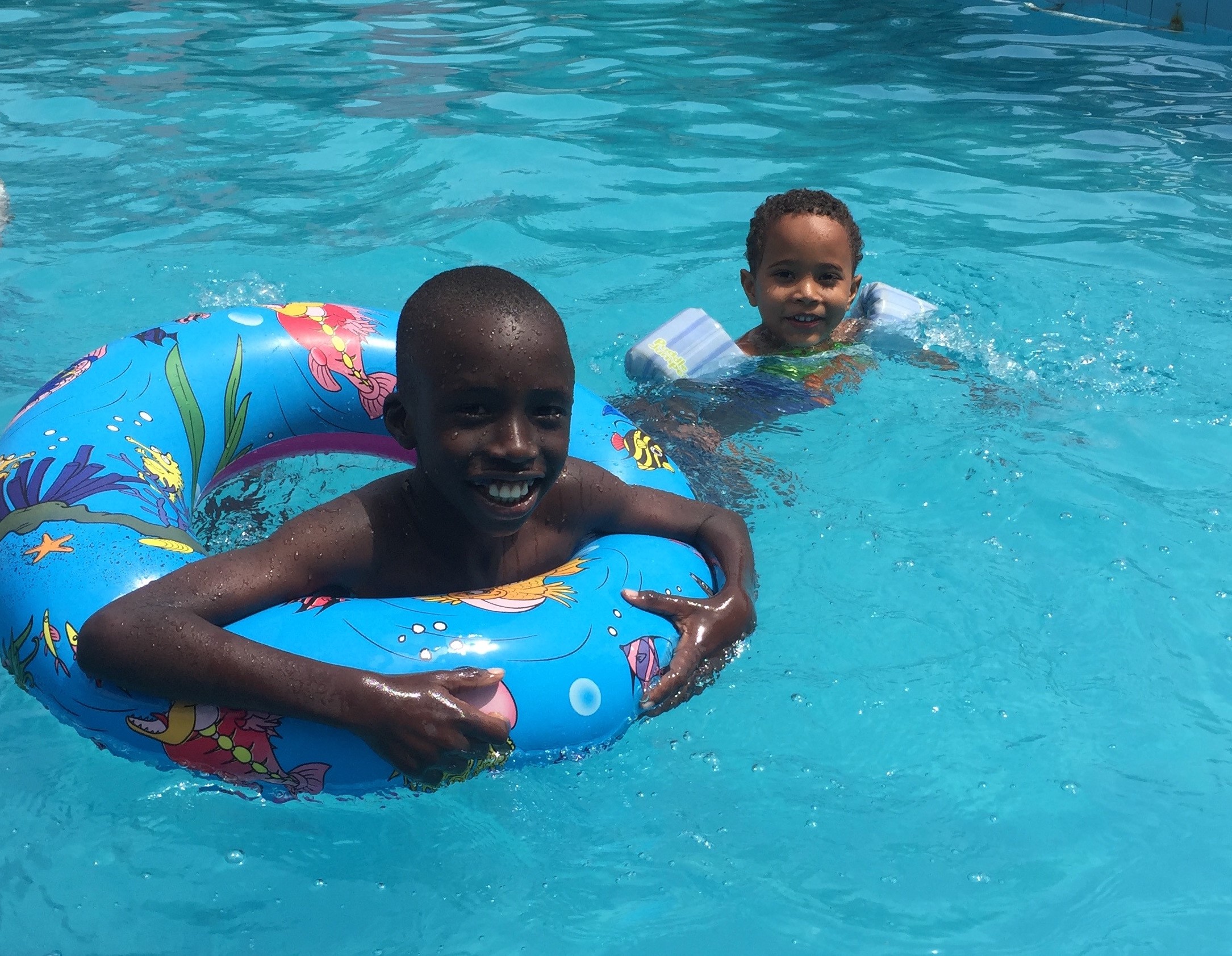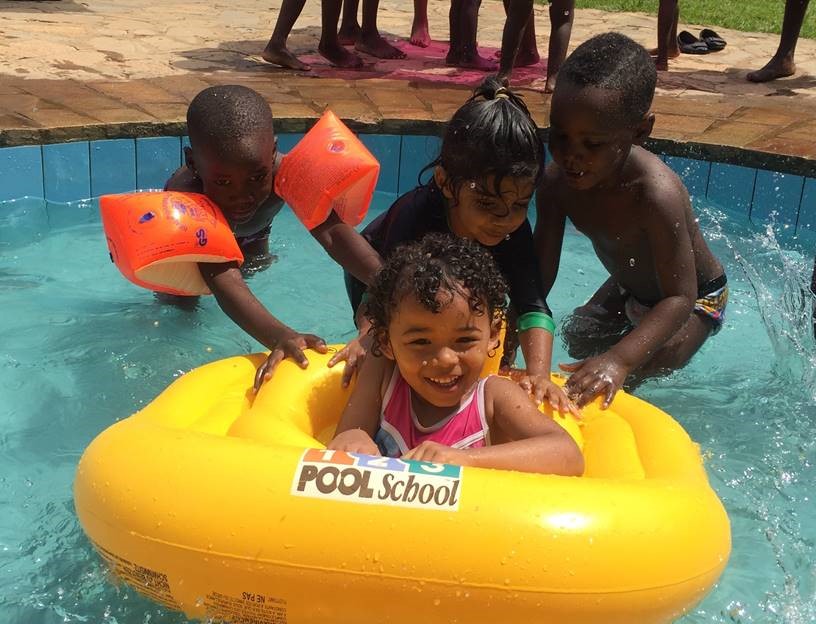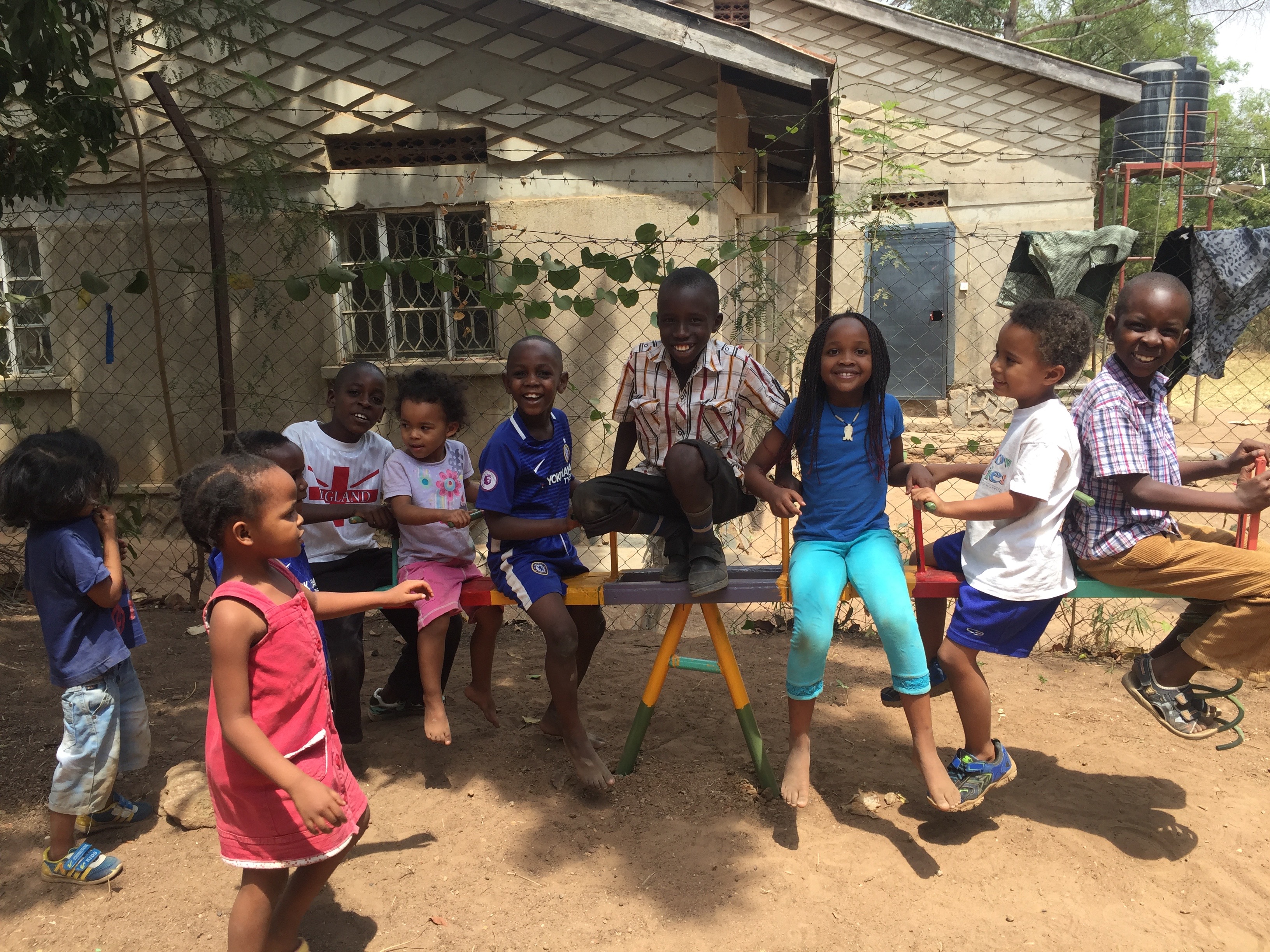A Letter from Shelvis and Nancy Smith-Mather, serving in South Sudan
April 2018
Write to Shelvis Smith-Mather
Write to Nancy Smith-Mather
Individuals: Give online to E200316 for Shelvis and Nancy’s sending and support
Individuals: Give online to 052032 for RECONCILE
Congregations: Give to D507554 for Shelvis and Nancy’s sending and support
Churches are asked to send donations through your congregation’s normal receiving site (this is usually your presbytery)
“Mommy, did you press ‘English’?” my three-year-old daughter asked.
“Yes, I pressed ‘English,’” I responded.
“Why? We don’t speak English?!?!” she said, flustered by the thought she may not understand Winnie the Pooh.
“Yes, you do. English is the language that you speak,” I tried to reason with her.
“No, we don’t speak a language, we just speak ‘normal,’” she explained, in English.
My daughter’s grasp of the concept of language is just like my comprehension of race growing up as a European-American child in the United States. Other people had race or ethnicity, but I was just “normal.” Kind of like the way there is an “ethnic” foods section in the grocery store, and all the other food is just “normal” food, right?
I found it liberating, later in life, to embrace that I too have ethnicity, and other people who are different from me also think of themselves as “normal.” I am part of a people group with values and vices to be celebrated and lamented, just like everyone else. Watching my Ugandan neighbor politely try to force down pizza at my dinner table shows that my “normal” food may not even be tolerable to someone from a different place. In some contexts, my “group,” race, ethnicity, or even skin color may be the majority, and in other contexts I am the minority.
We talk about skin a lot in our family. Mommy’s tan skin, Daddy’s brown skin and the hybrid skin our kids live in. At times these conversations lead to larger discussions about different cultures, ethnic backgrounds, and countries of origin. Since my children’s skin is unique among their classmates, I decided to share about the wonder of skin on a day when I played substitute teacher at their school in Arua, Uganda.
I pulled out our National Geographic Kids’ “First Big Book of Why,” which answers a range of questions from: “Why do planes fly?” to “Why do doughnuts have holes?” And somewhere in the mix is: “Why are people different colors?” There are many shades of skin among the children in this small school, whose families are from Uganda, Rwanda, South Sudan, Kenya, Eritrea, Congo, the UK and the US. The topic caught the students’ interest, and the book put it simply, “Kids whose ancestors came from sunny places are born with more melanin, and darker skin.” “How cool is it that God gave people more protection from the sun in hotter places?” I asked the curious eyes glued to the pictures in the book.
This school is a special place, located in the home of a mother who loves to teach. The committed teachers write with chalk on freestanding blackboards; there aren’t any computers or projectors. Even though the educational resources differ from US schools, I am excited that my children are learning alongside friends who broaden their understanding of the world.
At home, we talk about there being good present in every culture. “You get to choose the good from many cultures and make all those treasures a part of you,” I try to explain. We have a large world map on our wall, and when the children meet someone from a new country, we search for it.
Helping our kids view life through a global lens became necessary as they interpreted the experience of living in multiple “homes”: their home in Decatur, Georgia, their home in Yei, South Sudan, and now their home in Arua, Uganda. Somewhere along the way, I realized the importance of them appreciating the multiple stories of various people groups, as they learn to appreciate their own multiple stories.
Thanks to a series of scholastic books written for children, my kids know about Gandhi and the people of India overcoming colonization. They learn about the Australian Aborigines winning the right to vote in 1962 and buying back some of the land taken from them. A book about Abraham Lincoln helps my children understand the concept of Civil War, which sheds light on the reason we moved away from the home they knew best in Yei, South Sudan. We are in Uganda, like many of our neighbors from Yei, until the Civil War in South Sudan ends or moves farther away from our hometown.
My children hear many stories, including the ones that are hard for an American parent to tell. The stories that show the sinful institutions and practices written in the pages of our history as well as the narratives of courageous Americans who work to correct these wrongs. It is important for these young, US citizens to see that such evils and altruisms are in no way uniquely American. Hopefully, in an age-appropriate way, they can understand the brokenness in each human being, including themselves, and also the sacred value of each person, which cannot be erased by mistreatment from another.
This has been a learning process for me personally. When my firstborn child, Jordan, was three years old, I was afraid to read him stories about Martin Luther King Jr. At such a tender age, I did not want to expose him to the horrible treatment of blacks in America. It did not feel right. At that point, his world was captivated by blowing bubbles, cartoons about the alphabet, and fitting pieces into puzzles. I did not want him to see hatred, or for him to think people were of different value based on their skin color. Now my second-born, Addie, is three, and I do not hesitate to explain to her issues of race, cultural and religious differences, or the ways people have been unkind to each other, making God’s heart sad.
“Why White Parents Don’t Talk About Race,” is the title of a chapter in a book called Nurture Shock, recommended to me by a preschool teacher in the US. The chapter describes a study of families with kindergarteners which found that 75% of white parents “never” or “almost never” talk to their children about race. Some parents felt not talking about race allowed their children to “not see” color and live without biases. Yet, research shows that young children do recognize and categorize by race and they also form racial biases.
One day, when Jordan was in a small class in the US, a classmate said, “I don’t want to play with you, because your skin is brown.” This was a class of 3 and 4 year olds. The teacher overheard the comment, talked to the child, and informed both sets of parents about the incident at carpool pick-up. At that time, it surprised me that kids make such distinctions by age three or four.
The interaction, from what I could tell, did not scar Jordan. “Did anything happen at school today that made you sad?” I asked. He thought hard about it, looking into the distance with a determined stare, but couldn’t think of anything, and said “no.” The encounter was probably harder on me. Retrospectively, I wish I had prepared him for that moment, so that he could respond from a place of self-confidence, self-awareness, and God-awareness.
If kids see color on their own, let us as parents, teachers, and caring adults help them understand it in a healthy way, a way that acknowledges and undermines harmful biases. Let’s give them the gift of a vocabulary and divine strategy for understanding race. Let’s allow them to see color and see the good in it. God made it good.
Thank you for your support of our family’s call to international ministry. We are deeply grateful for your partnership.
Nancy and Shelvis Smith-Mather
![]() You may freely reuse and distribute this article in its entirety for non-commercial purposes in any medium. Please include author attribution, photography credits, and a link to the original article. This work is licensed under a Creative Commons Attribution-NonCommercial-NoDeratives 4.0 International License.
You may freely reuse and distribute this article in its entirety for non-commercial purposes in any medium. Please include author attribution, photography credits, and a link to the original article. This work is licensed under a Creative Commons Attribution-NonCommercial-NoDeratives 4.0 International License.


